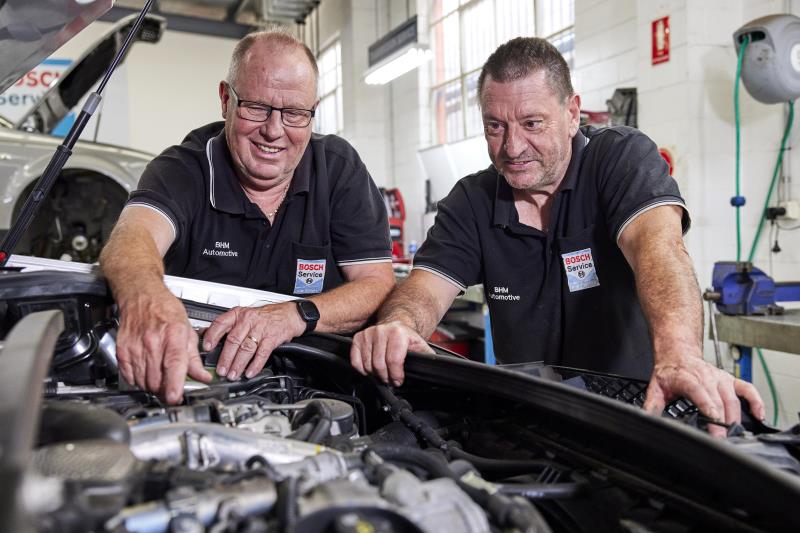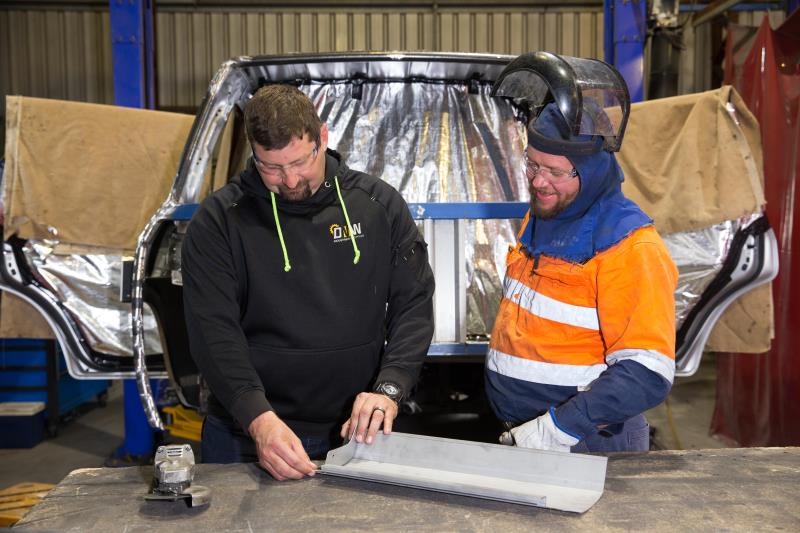How do you know when it’s the right time to take on a new employee?
Hiring an extra member of staff is a big financial and resourcing commitment; but bringing in the right person at the right time can help you grow, secure and futureproof your business.
So, it’s a decision every workshop owner wants to get right.
We asked some of the mechanical industry’s top experts for their best advice on how to judge when it’s time to bring in more labour. Here are nine questions they suggested every business owner needs to ask themselves when weighing their options.
Could you be using your existing workforce more effectively?
Start by looking closely at how well you’re using your existing resources, says Jeff Smit, technical editor at The Automotive Technician (TatBiz).
“Say you’re employing two technicians: how much of their day is spent doing mundane things that maybe a non-skilled person or a workshop assistant could do?” he said.
“You think you need more ‘hands on deck’, but what sort of hands do you need? Do you need to put someone in the office to free up the manager, who’s a fully qualified tech? Why is he organizing job cards for tomorrow or why is he answering the phone?
“You don’t want to be paying a fully-fledged technician on high hourly rates to do those kinds of tasks.”
READ MORE: 8 indicators of success for any workshop

Are you achieving decent productivity from your existing staff?
How productive is your current team?
TatBiz general manager Geoff Mutton said you’ve got to be achieving decent productivity out of your existing staff before you consider hiring more.
“If you’ve got poor productivity from two staff and you bring in a third one, nothing’s going to change,” he said. “It’s just going to get harder for you to manage. You’re not going to make more money — you’re just going to go backwards.”
Rachael Evans, who as the Workshop Whisperer spends her working life helping workshop owners achieve their business goals, says a workshop that is edging towards 80% productivity is a key indicator that it could be time to take on a new technician.
That’s a decision she recommends making with your accountant.
“It’s got to be costed and it’s got to be budgeted,” she said. “You need to know what type of return on investment you’re looking for from this person.”
You need to be able to:
- Project what additional revenue you’re going to generate
- Be sure the new employee is going to pay for themselves
- Track how well they’re performing against your goals.
Are you booked more than a week in advance?
Another key indicator is if your appointments are booked out more than a week in advance, says Geoff.
“It’s very comforting to be booked out but there comes a point in time when you will start losing customers, because they can’t wait for a week or two weeks for an appointment,” he said.
Geoff warned the customer is likely to start ringing around other workshops, at which point, you risk losing them as a customer for good.

Is it time to increase your labour rate instead?
If you are booked more than a week in advance, Jeff suggests an alternative to hiring an extra pair of hands could be to charge a higher labour rate.
“If you put a businessman’s hat on, if you’re booked out two weeks in advance, you’re not charging enough,” he said.
“You need to up the ante on what you’re charging. Yes, you’ll lose a few customers, but you’ve got too many on your books now. So, lift your labour rate by 10% and lose maybe 10% of your customers.”
The advantages of this option, according to Jeff, are:
- You’ll make more money
- You’ll have to work less
- You can pay your staff more.
READ MORE: Why it’s time for a conversation about staff pay rates
Are you and/or your team rushing jobs?
Are your team constantly rushing jobs to get them finished on time? If so, it could be time to take on more staff.
Jeff Smit said it was important that staff had adequate time to do the jobs they’d been allocated.
“The quality of the job done can actually improve, because the guys aren’t having to rush to get on to the next vehicle.”
55% of Members told State of the Nation that doing high-quality work was a key indicator of success.
PRO TIP: Hire new staff two months before you will need them, Rachael says.
“You don't want to be so flat out and so time-poor that you can’t actually invest the right amount of time in training them,” she said. “New staff have got to come before you actually need them.”

Do your staff risk burning out if nothing changes?
Do you risk losing the staff you already have, if nothing changes?
If your team are feeling overworked, rushed or burned out, it can quickly have detrimental effect on staff morale and retention, Jeff said.
“If staff are hard to find, then you’ve got to have a very strong retention policy that says, ‘I’ve got good staff; I’m going to do everything in my power to make sure I hang onto them’ — not the opposite,” he said.
32% of Capricorn Members told State of the Nation they considered loyal staff a key success indicator.
READ MORE: How to treat your staff like rockstars (and why it pays off)
Are you creating an unnecessary bottleneck in the business?
Before you hire someone new, Geoff recommends taking a moment to reflect on your own role in the business.
“Sometimes owners can become a bottleneck in the business,” he said. “They might be taking the bookings out the front, then working out the back — they’ve got a finger in everything that’s going on.
“They need to delegate and relinquish some control to free up the bottleneck they’re causing — and that’s probably the hardest thing for them to do.”
PRO TIP: Look closely at the structure of your business and who is responsible for what tasks and areas. Delegate where you can, Jeff said.
“If you don’t, then putting on an extra tech is just going to exacerbate the issue and nothing is going to change,” he said.

Is it time to fix your work-life balance before something breaks?
Are there other things you’d like to do with your life?
We know from the State of the Nation Report 2020 that 52% of Capricorn Members say having a good work-life balance is a key indicator of success — yet 46% say it’s the biggest challenge they face running an automotive business.
READ MORE: 7 tips for a better work-life balance in the automotive industry
If your work-life balance isn’t what you’d like it to be, then it could be time to take on someone new. The hard part, as Jeff has already mentioned, can be relinquishing control.
“It’s easy to say you’re going to leave every day at 4 p.m. or only work four days a week, but it can be very hard to actually do,” he said.
“I’ve seen it so many times where people have taken on additional staff (to improve their own work-life balance) and in actual fact it has been detrimental to the business, not beneficial.”
PRO TIP: If you’re going to take on staff in order to step back, then you need to give your team boundaries and structure, and trust them to do their job. Don’t try to wrangle back control.
READ MORE: Can your business survive for two weeks without you?
Is your business vulnerable if a key person leaves?
Lastly, is your business at risk if one of your existing team members leaves?
This is called “key person risk”, and Geoff said every workshop owner needs to assess their exposure to it.
“I speak to a lot of guys, some of them are in regional areas, and their staffing levels are just right — and they’re happy,” Geoff said.
“But we know that, if they lose a staff member, they’re in a small country town —recruiting a qualified technician is going to be nearly impossible. There’s just no-one to recruit.
“So sure, they’re perfectly staffed right now, but what if their older guy retires, or someone leaves or gets injured? Suddenly short-staffed and it’s going to be hard to replace the person who left.”
PRO TIP: Think long-term and consider taking on an apprentice.
“Maybe you don’t need the apprentice right now but in two or three years you will, without doubt, lose one of your qualified techs, and then you’ve got an apprentice who is ready to step up and fill the void,” Geoff said.
“Think of it as futureproofing your business against staff turnover.”
Just 34% of Members currently employ an apprentice, according to State of the Nation data.
Get your free copy of State of the Nation 2020.


